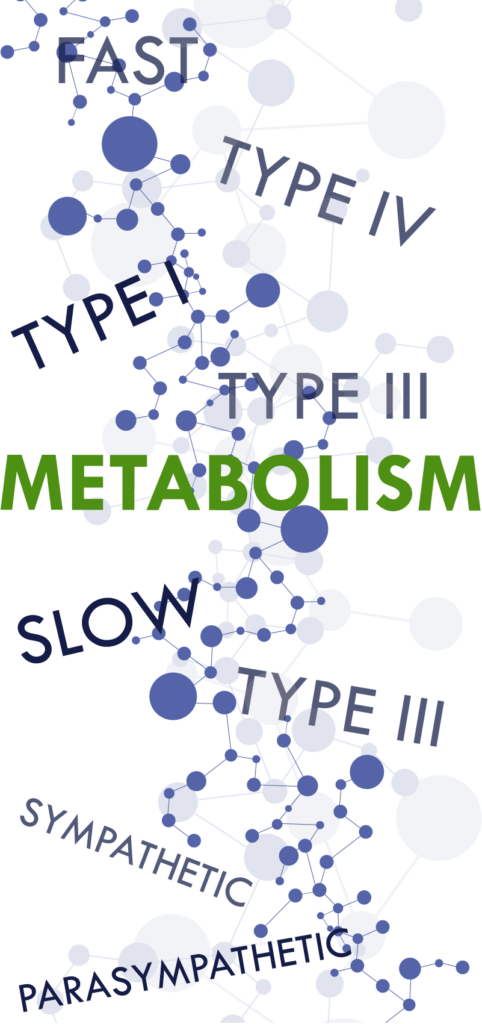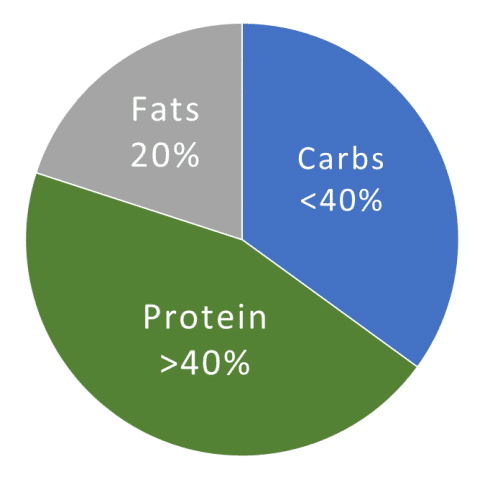Slow Metabolism: Type 2
Understanding Your Metabolism
Your metabolism goes far beyond the calories you burn. Metabolism is essentially your very own personal chemistry. Your metabolism is the comprehensive functions of your liver, thyroid, gastrointestinal tract, adrenal glands, pancreas, the water you drink, food you eat, oxygen you breathe, genetics you’ve been given and the environment you live in!
Slow Metabolism: Type 2 Characteristics
Manifestations of the emotional and physical characteristics of both fast and slow metabolizers depend on a number of factors including degree or severity of mineral (aka trace element) imbalances – including vitamins and amino acids, endocrine (hormone) activity and the length of time imbalances have been present.
- Parasympathetic Dominant nervous system – the energy-conserving autonomic nervous system.
- Thyroid gland activity = slow or decreased.
- Parathyroid gland activity = fast or increased. which increases calcium loss from bone.
- Adrenal gland activity = decreased or less than ideal function.
- Stomach acid = hydrochloric acid in gastric secretions is low.
- Pancreatic activity = decreased enzyme production and insulin hormone production.
- Body shape consideration = when overweight, body can take on a more apple-shaped appearance with fat storage around the abdomen and core area.
- Energy profile = periodic energy fluctuations followed by bouts of fatigue.
- Mineral and elemental toxicity retention = very high.
- Stress index = usually follows an acute emotional or physical stress reaction.
- Prone to lower body temperatures and cold extremities.
- Prone to low blood pressure and orthostatic hypotension (dizziness, lightheaded, or fainting upon standing from a lying or sitting).
The above listed information is not intended to be a diagnosis. The characteristics described above are general characteristics and may or may not be present. You may notice the presence of these characteristics in varying degrees. Medical prescriptions, endocrine therapies such as insulin, previous gland removal, continual steroid or anti-inflammatory drug use, may all effect the above characteristics.


General Dietary Suggestions for Slow Metabolism Type 2
A low protein, high carbohydrate, and high fat diet in addition to increased consumption of refined sugars and dairy product as a slowing-down effect on metabolism and energy production. To optimize your metabolism, consider implementing:
- Eat a high protein food at each meal. Lean protein is recommended and which should constitute at least 40% of the total caloric value of each meal. Recommended sources are lean beef, fish and fowl (skinless chicken, turkey, cornish hens, etc).
- Increase frequency of meals. To stimulate your metabolism increase the frequency of meals to 4-6 small, low caloric meals per day. This will help to sustain the level of nutrients necessary for energy production and decrease blood sugar fluctuation.
- Eat a moderate amount of unrefined carbohydrates. Carbs aren’t evil or bad when consumed in healthy unrefined forms. This vegetables, whole grains and legumes. Try to maintain less than 40% of daily calories from healthy, unrefined carbohydrates.
- Avoid all sugars and refined carbohydrates. Sugars cause insulin spikes throughout the day and inefficient pancreatic activity. Minimize white and brown sugar, honey, candy, soda, cake, pastries, alcohol and white bread.
- Avoid high purine protein. Examples include mackerel, liver, kidney, heart and sardines.
- Reduce intake of fats and oils to 20% of caloric total.
- Reduce or Avoid milk and milk products to once a day or every other day. This includes milk, cheese, creams and yogurts.
- Reduce fruit juice intake. Fruit juices are often high in sugars. This includes orange, apple, grape and grapefruit juices. Vegetable juices are acceptable to consume in moderation.
